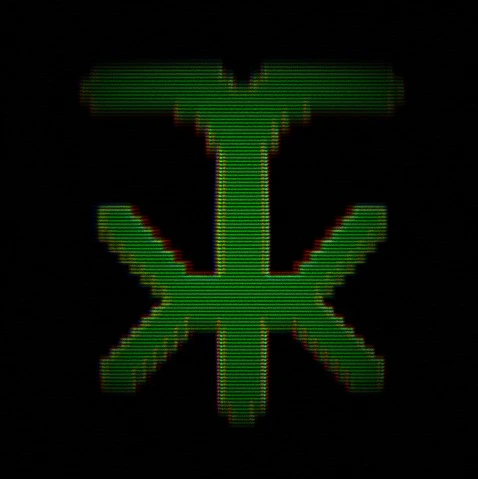I installed a few different distros, landed on Cinnamon Mint. I’m not a tech dummy, but I feel I’m in over my head.
I installed Docker in the terminal (two things I’m not familiar with) but I can’t find it anywhere. Googled some stuff, tried to run stuff, and… I dunno.
I’m TRYING to learn docker so I can set up audiobookshelf and Sonarr with Sabnzbd.
Once it’s installed in the terminal, how the hell do I find docker so I can start playing with it?
Is there a Linux for people who are deeply entrenched in how Windows works? I’m not above googling command lines that I can copy and paste but I’ve spent HOURS trying to figure this out and have gotten no where…
Thanks! Sorry if this is the wrong place for this
Docker’s hard. I never really got my head around it. I used “Swizzin Community Edition” to setup my media server. It was really easy compared to Docker-based solutions.
Docker is a developer tool, not really something you should be using without some technical knowledge, or at least some experience in the terminal. It’s purely a terminal application, so you just type “docker” in the terminal to use it. You can also type “man docker” to view the manual (which shows arguments and command you can use) but again, that won’t help much without some prior knowledge.
The things you’re trying to use look like self-hosted web servers, which is a lot to set up for someone who’s new to the terminal. I won’t stop you if you want, but be warned. I’d recommend using something simpler like cozy, which you should be able to find and download in the software store.
Docker is a developer tool
First, it’s not. Second - so what if it is? Sounds like gatekeeping to me. They’ve expressed interest in learning how to use it, that’s enough.
If they want to use it that’s fine. I’m just cautioning against using a command line tool like that until they feel somewhat comfortable with the terminal.
The terminal is not some arcane source of dark power to be feared. It’s one of the defining characteristics of the Linux ecosystem. Anybody looking to use Linux should be expecting to use it and tools that are built for it.
It’s not like they could even really do any damage with docker either.
Docker is a deployment tool. Not a developer tool.
Unless you’re trying to simplify your deployment stack there isn’t really a compelling reason to install it unless you’re trying to learn something new for the fun of it.
With that said you need things to deploy to make it useful. Like a database server, web server, etc.
Docker is a cli only app, if you want a gui interface check out docker desktop
This is probably what OP wants. A gui
A GUI isn’t going to help, mon capitaine. Start-stop is the easy part, OP will still need to create a docker-compose.yml and a systemd unit.
The OP wants a LLM to walk him through the process and generate all of the relevant files. If they entered 2-3 prompts into gemini/chatgpt they wouldn’t have needed this thread.

Most docker releases I have seen include a template yml
Did you miss the part where OP failed to Google how to start a docker image?
I admit you’re right Q, regrettably so… Nonetheless, this poor individual deserves our help.
And in return for my help, all I’m getting is hate from the primitive lifeforms…

The crazy pills are the first step in learning. Embrace the crazy. Take more pills.
It worked for me!
Which pills would you recommend?
Estrogen? It works for my girlfriend and her Linux shenanigans!
Damn, I’ll have to try it out!
There are distributions like CasaOS and TrueNAS Scale that try to offer at least a bit of graphical guidance for some popular apps.
Otherwise, you’re jumping into the server pool, Windows doesn’t really work that different from Linux in that area (in the sense that you can just click on things).
Keep in mind that you’re not just learning to use linux, but also learning to use docker,and docker is a complex tool by itself, which makes your journey significantly harder.
I never user Sabnzbd so I wouldn’t be of much help. However, you could post some of the problems you find, so that other people lay help you.
Docker does not have a desktop app. You’re supposed to install either Docker desktop or Podman desktop (which also supports Docker).
Once it’s installed in the terminal, how the hell do I find docker so I can start playing with it?
It’s not installed “in the terminal.” It’s installed on the computer; the terminal is just one way you might interact with it.
In particular, docker is a type of program called a ‘daemon’ or ‘server’: it runs in the background and doesn’t have an interface, per se. You can run docker commands and get their output, and you can of course interact with the services you’re using docker to run, but there is no “docker app” that runs as a foreground interactive process (either GUI app or ncurses terminal app).
TBH I’ve been using Linux for over a decade, can install & set up Arch from scratch etc. and I still don’t understand Docker.
Honestly, for those tools, I’d recommend posting in piracy@lemmy.dbzer0.com.
Echoing some other comments, those are decently complex tools all around. I’d recommend doing a few tutorials on docker before trying out that project (short ones, just to build a mental model).
As others have said, docker is a command line tool.
docker -vin your terminal should be enough to “find” it. That’ll show you the version of docker you have installed.From there, I’d recommend the hello world image to start (this should get you there https://www.geeksforgeeks.org/docker-hello-world/).
From there, keep messing with it. Get more familiar with docker through their docs. Read a bit on images vs containers, port mapping, and volumes and mounts.
As others have said, look for docker only in the terminal. And then expect to spend a little time familiarizing yourself with what problem docker solves and how it solves it. Once you’ve got docker in your back pocket, you’ll be very well situated to set up all kinds of apps.
And when you run into other problems, there’s communities to answer and work through the issues
I have been in and out of Linux for years and Docker is just… Hard. There’s a thing called portainer, and it makes it so you can muck with Docker from a web browser, and that is literally all I know at this point. Still, might be helpful? I have some Docker stuff, and it works the way I assume my mom thinks Linux works. Someone typed fast and magic happened. Best of luck!
Docker can be really confusing, but IMO being able to add and remove software without having changes made throughout your system is well worth the effort.
There’s not a fantastic GUI for managing docker. There are a few like dockge (my favorite) or Portainer.
I recommend spending some time learning
docker runwith exposed ports, bind volumes (map local folders from your drive to folders inside the container so you can access your files, configs, content, etc. Also so you don’t lose it when you delete the container and pull a newer version).Once you’ve done that, check out the spec page for
docker-compose.yaml. This is what you’ll eventually want to use to run your apps. It’s a single file that describes all the configuration and details required for multiple docker containers to run in the same environment. ie: postgres version 4.2 with a volume and 1 exposed port, nginx latest version with 2 volumes, 4 mapped ports, a hostname, restart unless-stopped, and running as user 1000:1000, etc.I’ve been using docker for home a LIGHT business applications for 8 years now and
docker-compose.yamlis really all you need until you start wanting high availability and cloud orchestration.Some quick tips though.
- Search
some-FOSS-app-name docker-composeread through a dozen or so templates. Check the spec page to see what most of the terms mean. It’s the best way to learn how to structure your own compose files later. - Use other people’s
compose.yamlfiles as templates to start from. Expect to change a few things for your own setup. - NEVER use
restart: always. Never. Change it torestart: unless-stopped. Nothing is more annoying than stopping an app and having it keep doom spiraling. Especially at boot. - Take a minute to set the docker daemon or service to run at boot. It takes 1 google and 30 seconds, but it’ll save you when you drunkenly decide to update your host OS right before bed.
- Use mapped folders for everything. If you map
/srv/dumb-app/data:/datathen anything that container saves to the/datafolder is accessible to you on your host machine (with whatever user:group is running inside the container, so check that). If you use the docker volumes like EVERYONE seems to like doing, it’s a pain to ever get that data back out if you want to use it outside of docker.
- Search
Been there, now I have over 12 containers running h24 on an old spare laptop with everything exposed via traefik (reverse proxy), self-signed CA, local DNS… what a ride ^^'.
The best advice and thats what helped me to get going, is to look/follow some youtube videos about docker and how to expose your first container locally, so you get the general gist on how it works.
2 years ago, NetworkChuck introduced me to docker container. Not saying he’s the best youtuber to get you into docker and learning and stuff, but it’s a GOOD starting point :).
There is also Christian Lempa, Tech world with nana, who also will you give you some good pointer with docker and docker compose.
Good luck !
Man, good luck. Is there no other way you can accomplish that without Docker. I’ve been using Linux for years and I still don’t know how to set up a docker container lol
Docker is not needed for this, it just helps keep things clean
You’re right. The comments here have been really weird and kinda missed the whole point of OP’s post.
- Docker is not needed, I’ve had lots of self hosted things for years before using docker.
- Docker is not that hard, you just need to learn it like anything else, once upon a time going to a webpage was an unknown thing to all of us, yet now it’s a daily thing.







